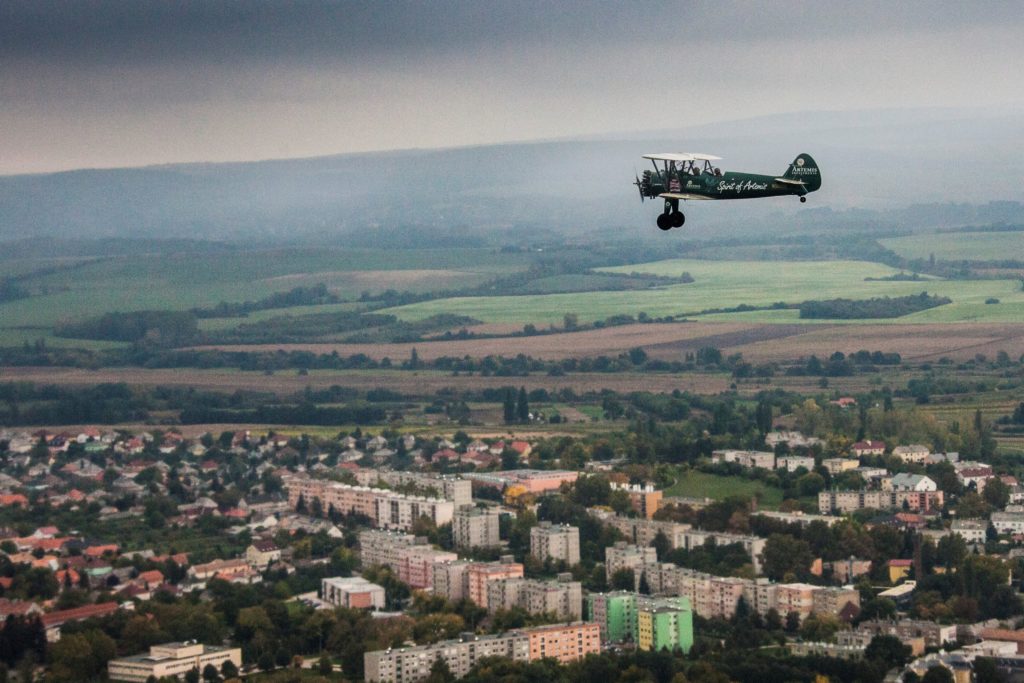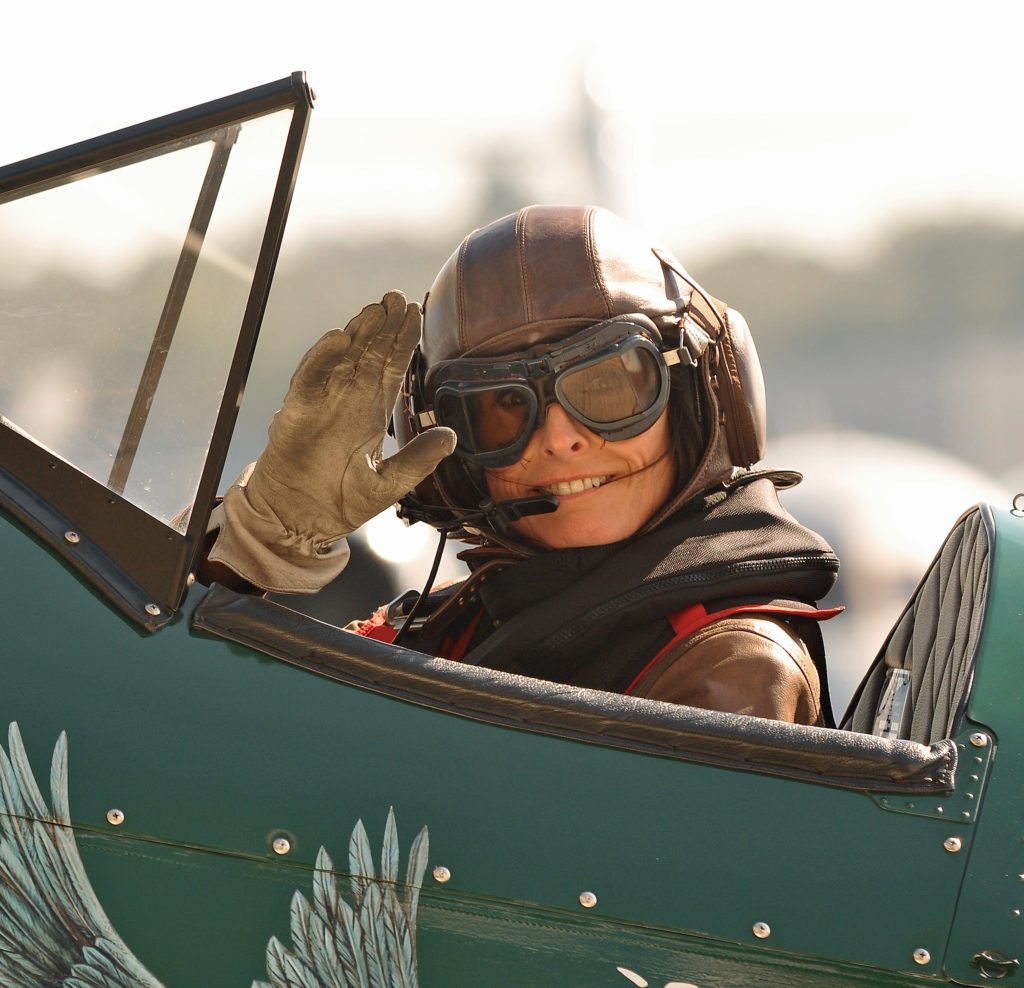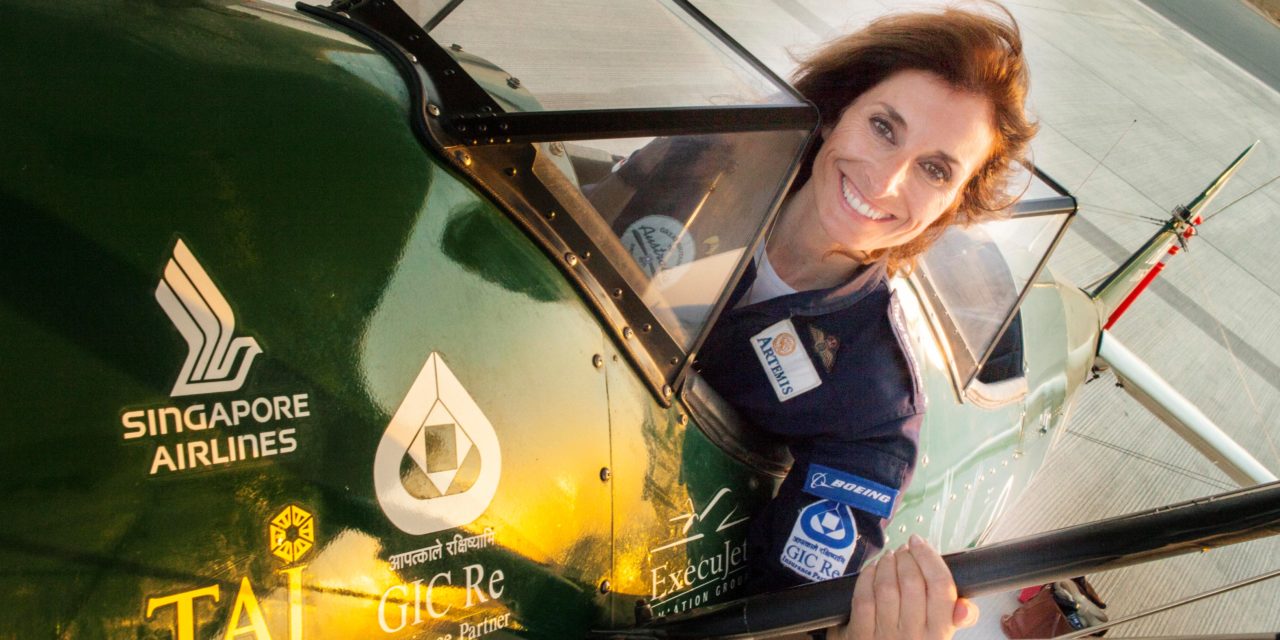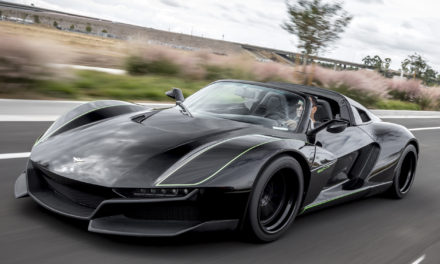Born in England but raised in Canada, Tracey Curtis-Taylor had her first flying lesson at age sixteen. Fascinated with old airplanes, she has worked in aerial photography for several years before pursuing her interest in historic aviation. Guest speaker at the recent Winter Aviation Summit, (WAS) in Vevey, Switzerland, she told her rapt audience about her series of flying expeditions across five continents with her 1942 Boeing Stearman. Currently under confinement in London, the daring aviatrix is writing a book due to come out concurrently with a documentary film to be released next year.
By Tracey Curtis-Taylor
We’ve been under lockdown here since March 23. With mortality still around 800 per day and the health system under severe pressure, there’s no indication yet how or when we’re likely to get out from under the dreadful pall of Covid-19. Airline fleets around the world are grounded and it’s no different for a sole aviator. My two vintage aeroplanes are based in Hungary with 3G Classic Aviation and they are effectively grounded until the borders open again and I can get over there to fly them. I haven’t flown since early January and have no idea when I will be able to fly again. This is all very dispiriting but I am trying to use the time constructively by writing the book, which I have been procrastinating over for the last two years. It has taken a global plague to finally make me do it.
So I’ve been knocking out 2000 words a day, which is apparently what Winston Churchill used to do, but of course he was also running the country. The book is a personal memoir, but it’s very much a flying story: my early start in Canada and my first flying lesson at age 16; learning to fly in New Zealand and flying early military trainers with the NZ Warbird Association. Then coming back to England in the late 1990’s and helping with the Flying Legends Air Show at Duxford before spending nine years with my Ryan Recruit at the Shuttleworth Collection at Old Warden and participating in their summer air shows.

All of this was fantastic preparation for when I would eventually be flying my 1942 Boeing Stearman across five continents in a series of expeditions celebrating the female pioneers of the air. I commissioned the restoration of this classic biplane in 2012 with 3G Classic Aviation in Austria-Hungary. It has a 9 cylinder Lycoming radial engine with 300hp and a constant speed propeller. It has an endurance of six hours with a cruise speed of 85kts. Apart from that it is a standard Stearman. The cockpit is fitted with a Garmin 430 and I use an ipad with Air-Nav Pro for navigation in addition to paper maps.
‘Spirit of Artemis’
With Artemis Investments as my principal sponsor, I named my Stearman the ‘Spirit of Artemis’. It won the concourse for the best civilian aircraft at the Royal International Air Tattoo in 2013 and a few months later I flew it from Cape Town to Goodwood retracing Lady Heath’s historic flight from 1928. She was the first person to fly a light aircraft from the Cape back to the UK. My flight up Africa took two months to complete with 38 stops. In 2015-16 I flew the Spirit of Artemis from England to Australia in homage to Amy Johnson, the first woman to fly to Australia in 1930. Amy was trying to break the world record, which at the time was 15 days. She made it in 19. With our flight it took three months with 62 stops, so it was a massive undertaking in today’s bureaucratic, post 9/11 world. From Sydney we shipped the Stearman to America to fly the US Transcontinental Flight following the historic air mail route from the 1920’s. It does not have the range to fly across oceans. All my expeditions were done with a support team and a film crew.
But with the US flight, we had a little problem in Arizona when the Stearman suffered a partial engine failure shortly after take off from Winslow. With a density altitude of nearly 7000ft, the engine was already operating at significantly reduced power because of the thin air. The sudden additional loss of a further 300rpm was enough to stop the aircraft flying. There was no choice but to fly it into the ground after making a shallow turn to the left to avoid power lines ahead. The Stearman hit hard and propelled itself some twenty yards along the ground before it hit a dense sage bush, which tore off the right hand undercarriage leg and sent us into a full 360degree cartwheel. The big double wings, made from wood and fabric, absorbed the energy of the crash but were effectively destroyed, as was the tail. We stepped out uninjured but the damage to the Stearman was appalling. With the expeditious help of my insurers, GIC Re, I had the wreck airlifted back to Hungary and the team at 3G Classic Aviation rebuild it for the second time. They managed to do this in the space of six weeks, which enabled me to attend the Farnborough International Air Show in 2016, which was celebrating Boeing’s Centenary. The Boeing Company has supported my expeditions around the world and with their help we built a global outreach programme to encourage more girls and women into aviation and aerospace.

‘Spirit of Victory’
In 2017 we took the Stearman, now called the ‘Spirit of Victory’, back to America for a second attempt. I flew it from Los Angeles to New York in two weeks covering 3000 miles over fifteen legs with a spectacular finale flight over New York Harbour, around the Statue of Liberty and up the Hudson River against that jaw-dropping line of skyscrapers blazing in the sunset. It was one of the most memorable flights I have ever done and I felt almost overwhelmed by that vision of the city seen from the perspective of an open cockpit biplane flying at low level. I can report that on this occasion there was no over-sized gorilla hanging off the Empire State Building trying to snatch me from the air. Over the last two years we have been working on the global documentary of my flights and those of the female pioneers and their lost legacy. This film will hopefully be released next year and if all goes according to plan there will be a book to go with it. With these two projects running in parallel, my other objective is to expand on the outreach programme and continue to operate internationally to support and encourage women into aviation. Only about 5% of commercial pilots are women and that needs to change substantially.
The deleterious effects of the Covid-19
I really hate to think what the short to medium term effects of the Corona Virus will be on international air travel, but it will almost certainly have a seriously deleterious effect on the airlines and pilot recruitment. There are going to be some very difficult times ahead, but we must continue to press for equal opportunity and to reduce the heavy male bias which has dominated too much of aviation history. My own plans are to get back flying as soon as possible and hopefully have a few good months over the summer to just buzz around for the sheer transporting pleasure of it. There are still many places I would like to take the Stearman. In particular I am thinking about Cape Horn to Alaska.A while back, a close friend of mine told me with a just a touch of asperity: ‘Trace, you can’t just keep flying a biplane around the world‘. I’m not so sure. I’ve got the best expeditionary Stearman in the world, so why not? You can’t keep an old bird down for long!









